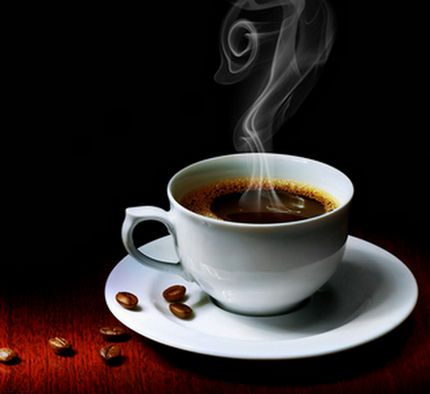How to deal with the characteristics of Manning Coffee

Professional barista communication, please pay attention to coffee workshop (Weixin Official Accounts cafe_style )
Mantenin Coffee Treatment
Sellers often label Lintong Lindong and Mandheling Mandheling coffees as dry processed. In fact, the pulp is often separated from the coffee seeds by a variety of mixing modes, more commonly a backyard wet treatment. Clever farmers put freshly picked coffee cherries into a crude peeling machine assembled from scrap metal, wood and bicycle parts. The peeled, sticky beans are then fermented overnight in plastic woven bags. The next morning, wash off the soft, fermented pulp and stickiness by hand. The silver-coated coffee is pre-dried on a sheet in the front yard and sent to a middleman's warehouse where the silver is removed and further dried. Finally, the coffee is trucked to Medan Port (capital of Sumatra) for the third and final drying.
It has also been reported that in other Mandheling regions, after removal of the pericarp, the mucilage is allowed to dry and adhere to the beans, as is done in Brazil with semi-washing. After that, the dried slime and silver skin are removed by machine. Finally, the same two-stage drying process takes place, first at the warehouse of the middleman and then at the warehouse of the exporter in Medan Port.
Process with Sumatra characteristics. I describe these processes in such detail because it is not clear to what extent soil and atmosphere and unusual treatment techniques and three-stage drying each affect the formation of the characteristics of Linton and Mantenin coffee. Only one thing is certain. These treatments occasionally produce excellent coffee but are also extremely unstable. Only relentless picking in the Medan Port exporter's warehouse ensures that the depth of texture and distinctive understated richness of Lintong and Mandheling emerge from the interference of other odors.
Sumatra Mantinin is the finest coffee bean grown in the original mountains of Michaels at an altitude of 750- 1500.
Arabica saplings were first introduced to Ceylon (present-day Sri Lanka) and Indonesia by the Dutch in the 17th century. In 1877, a massive disaster struck the Indonesian islands, and coffee rust destroyed almost all the coffee trees. People had to abandon Arabica, which had been in business for many years, and imported Robusta coffee trees from Africa. Indonesia today is a major coffee producer. Coffee is mainly grown in Java, Sumatra and Sulawesi, with Robusta species accounting for 90% of total production. Sumatra mantenin is a rare arabica species. Planted on hillsides between 750 and 1500 meters above sea level, the mysterious and unique Sumatra species gives mantnin coffee its rich aroma, rich taste, intense flavor, slightly chocolate and syrupy notes. Mantenin coffee beans have large particles, hard beans, easy to appear defects in the planting process, usually through strict manual selection after harvest, if the control process is not strict enough, it is easy to cause uneven quality, plus different roasting degrees will also directly affect the taste, so it becomes a controversial single product.
Asian coffee is best known from the Malay islands of Sumatra, Java and the Isle of Man.
Sumatra mantinin coffee from Sumatra, Indonesia, is the most famous of these, and it has two famous names, Sumatra mantinin DP First Class and Sumatra Mantinin Collection. Sumatra Mantenin DP has a long aftertaste and a wild fragrance, which is characteristic of the earthy taste of virgin forests. In addition to the rich taste characteristic of Indonesian coffee, there is also a bitter sweet taste, sometimes mixed with a slight musty taste, popular with people who like strong roast coffee; the reason why the collection Sumatra mantinin coffee is called "collection" because it is stored in the cellar for three years before export. But reserve coffee is not old coffee, but a slightly pale coffee that has been specially treated. This coffee is stronger, the acidity will be reduced, but the alcohol will increase, and the aftertaste will be longer. It will also have a strong spicy taste, sometimes bitter, sometimes walnut, and sometimes chocolate. Before Blue Mountain coffee was discovered, mantnin was considered the best coffee.
Sumatra mantinin coffee from Sumatra, Indonesia, is the most famous of these, and it has two famous names, Sumatra mantinin DP First Class and Sumatra Mantinin Collection. No one knows what DP means in DP class 1 of Sumatra Mantenin, but one thing is certain, that is, DP class of all Indonesian coffee is the most expensive;
Sumatra Mantenin DP has a long aftertaste and a wild fragrance, which is characteristic of the earthy taste of the virgin forest. In addition to the mellow taste of Indonesian coffee, there is also a bitter sweet taste, sometimes mixed with a touch of mildew, popular with people who like to drink strong roast coffee;
Sumatra mantning coffee is called a "reserve" because it is stored in cellars for three years before export. But reserve coffee is not old coffee, but a slightly pale coffee that has been specially treated. This coffee is stronger, the acidity will be reduced, but the alcohol will increase, and the aftertaste will be longer. It will also have a strong spicy taste, sometimes bitter, sometimes walnut, and sometimes chocolate.
What are the characteristics of mantenin coffee?
Mantenin coffee is produced in Sumatra, Indonesia, Asia, otherwise known as "Sumatra coffee." Her flavor is very rich, fragrant, bitter, mellow, with a little sweet. Most coffee lovers drink it as a single item, but it is also an indispensable variety for blending coffee.
In the era when Blue Mountain was not yet available to the world, Mantenin coffee was considered to be the best in the world. After roasting, the beans were very large, the raw beans were brown or dark green, and the caramel-like special fragrance tasted mellow and rich. The sweet and bitter nature did not have a soft sour taste, but it had a bitter taste. Production is relatively small, so the price is slightly higher than the general coffee beans.
Mantenin coffee producing area
Mantenin coffee is produced in Sumatra, Indonesia, Asia, otherwise known as "Sumatra coffee." The main habitats are Java, Sulawesi and Sumatra, 90% of which are Robusta species. The most famous of these is the mantinin from Sumatra. The finest of the fine traditional Arabica coffees produced in Sumatra North are marketed under the titles Lintong and Mandheling. Lintong refers to coffee grown in a small area southwest of Toba Lake in Lindong Administrative District. Small coffee plantations are scattered over a high, undulating clay plateau filled with ferns. Lintong coffee is grown without shade, without chemicals, and almost exclusively owned by small owners. Mandheling is a more general term, encompassing Lintong coffee and similar conditions for Diari (capital Sidikalang), the northern growing area of Toba Lake.
The origin of the name mantning coffee
Mantenin is not the name of a region, a place, a port, or a coffee variety. How did it get its name?
In fact, it is a pronunciation error of the Mandheling ethnic group in Indonesia.
During the Japanese occupation of Indonesia in World War II, a Japanese soldier drank excellent coffee in a cafe, so he asked the owner, the name of the coffee, the owner mistakenly asked him where you are from, so he replied: Mandenin. After the war, Japanese soldiers recalled drinking "Mantenin" in Indonesia. So Indonesia asked the passenger to transport 15 tons of coffee to Japan, which was very popular. Thus the name of Mantenin spread, and the coffee merchant was now known as PWN.
Known as mandheling, mandheling is found in northern sumatra near lake toba. The finished product has unique fragrance of herbs and trees.
The Japanese adopted stricter quality control more than ten years ago. After four manual bean picking and eliminating defective beans, they produced dark green and uniform gold mantin. This created another wave of market demand, and even Europe and America were crazy about it.
Aged mandheling, sweet as honey. Successful aging of the beans, will be the mantenin not elegant sour wear off. The sour ingredients are ripened and converted to sugar, making the coffee more rounded and sweeter to drink. The failed aged mantinin is like a coffee zombie, and the taste is hard to eat.
Mantenin Coffee
Her flavor is very rich, fragrant, bitter, mellow, with a little sweet. Most coffee lovers drink it as a single item, but it is also an indispensable variety for blending coffee.
Mantelin has a strong taste, with rich alcohol and rich and lively movement, not astringent or sour, alcohol and bitterness can be fully revealed. The appearance of the mantnin beans is arguably the ugliest, but coffee fans say the uglier the sumatra beans are, the better, mellower and smoother they taste. Mantelin coffee is considered to be the world's most mellow coffee, in the taste of mantelin, you can feel the obvious lubrication on the tip of the tongue, it also has a low acidity, but this acidity can also be clearly tasted, jumping slightly acid mixed with the most intense aroma, so that you can easily experience the lively factors in the mild fragrance. In addition, this coffee also has a light earthy aroma, some people describe it as herbal aroma.
Because mantning coffee beans themselves do not have acid characteristics, so the general special brewing methods, are based on mantning coffee beans, in the long-term insulation or brewing iced coffee, there is no annoying sour taste.
After baking, the beans are very large, brown or dark green, caramel-like special flavor, rich taste.
Important Notice :
前街咖啡 FrontStreet Coffee has moved to new addredd:
FrontStreet Coffee Address: 315,Donghua East Road,GuangZhou
Tel:020 38364473
- Prev

How about manning coffee? what's the specialty of manning coffee?
Exchange of professional baristas Please pay attention to the coffee in the coffee workshop (Wechat official account cafe_style) the gentleman in Sumatra Manning is a fine coffee bean grown in the original Michael Mountains at an altitude of 7501500. In the 17th century, the Dutch first introduced Arabica saplings to Ceylon (present-day Sri Lanka) and Indonesia. In 1877, a large-scale disaster hit India
- Next

What are the characteristics of manning coffee? where is the origin of manning coffee?
Exchange of professional baristas Please follow the coffee workshop (Wechat official account cafe_style) what are the characteristics of Manning coffee? Manning coffee is produced in Sumatra, Indonesia, Asia, also known as Sumatran coffee. Her flavor is very rich, fragrant, bitter, mellow, with a little sweetness. Most coffee lovers drink on their own, but it is also indispensable for blending coffee.
Related
- Detailed explanation of Jadeite planting Land in Panamanian Jadeite Manor introduction to the grading system of Jadeite competitive bidding, Red bid, Green bid and Rose Summer
- Story of Coffee planting in Brenka region of Costa Rica Stonehenge Manor anaerobic heavy honey treatment of flavor mouth
- What's on the barrel of Blue Mountain Coffee beans?
- Can American coffee also pull flowers? How to use hot American style to pull out a good-looking pattern?
- Can you make a cold extract with coffee beans? What is the right proportion for cold-extracted coffee formula?
- Indonesian PWN Gold Mandrine Coffee Origin Features Flavor How to Chong? Mandolin coffee is American.
- A brief introduction to the flavor characteristics of Brazilian yellow bourbon coffee beans
- What is the effect of different water quality on the flavor of cold-extracted coffee? What kind of water is best for brewing coffee?
- Why do you think of Rose Summer whenever you mention Panamanian coffee?
- Introduction to the characteristics of authentic blue mountain coffee bean producing areas? What is the CIB Coffee Authority in Jamaica?

